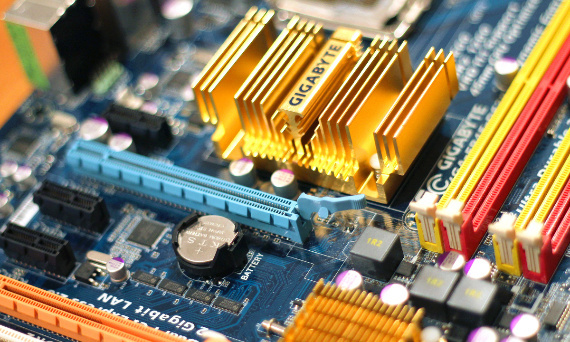
If there is something wrong with your PC - either it’s running slowly, freezing randomly, or crashing randomly - chances are, your RAM might be faulty.
Thankfully, there are a lot of ways to confirm that before you run to the nearest hardware store to buy a new RAM stick. Windows 10 contains native memory tests and RAM checkers that might help in identifying the issue and confirming that it is, in fact, faulty RAM.
In today’s guide, we want to show you a full step-by-step guide to performing a memory test on Windows 10 - continue reading to find out more:
What is RAM?
Let’s start with the basics - what even is RAM?
RAM, or Random Access Memory, is one of the essential components of your PC. It’s a type of extremely fast, short-term storage that your PC uses to store data that is currently in use. RAM is many times faster than your usual hard drive or SSD, and allows operations to be performed in an instant. Whenever you’re playing a game or browsing the web, all the data that is currently being used is stored in the RAM.
The memory in RAM is divided into segments. If one of these segments gets corrupted somehow, your PC might start to behave weirdly when it tries to save data onto that segment, often leading to a BSoD (Blue Screen of Death) - the infamous error screen on Windows that appears after the system crashes.
If you’re having frequent BSoDs, your RAM might be at fault - here’s how to check whether it really is:
Performing a memory test with Windows Memory Diagnostic Tool
There is a built-in tool in Windows 10 for analysing memory problems. Navigate to the Start menu, located in the bottom left corner of your screen on the Taskbar, and type in “Windows Memory Diagnostic”. The Search feature should find the application - run it.
A window will pop up, asking whether you want to restart the PC and check for problems, or check for problems the next time you start your computer. If you want to perform the test immediately, make sure you save all your progress and close all the applications before clicking the “Restart now and check for problems” button.
Once you click the button, your PC will automatically reset. However, instead of booting up normally and proceeding to the login screen, your PC will initiate the Windows Memory Diagnostics Tool. You don’t need to do anything - the test will start, proceed, and finish on its own. You can access additional options by clicking F1, but we advise that only advanced users who know what they are doing access them.
After the test is done, the diagnostic tool will close automatically and your PC will restart one more time. After logging in to your account, look out for a pop-up window in the bottom right corner of the screen. If a message appears saying “No memory errors were detected” it means that your RAM isn’t faulty, and you should look for issues with your PC elsewhere. If, on the other hand, any errors were detected, you can click on this pop-up to display more details.
Repairing faulty RAM isn’t really a viable option, even for experts, and it often makes much more sense to simply buy a new RAM stick and recycle the old one.
Performing a PC memory test with MemTest86
Windows Memory Diagnostic is a great tool that’s simple to use - but the accuracy of the tests can leave a lot to be desired. If you’re looking for a free tool with greater accuracy, we recommend you use MemTest86 by PassMark software. Moreover, MemTest86 works not only on Windows 10, but also on Linux and macOS. All you need is a USB stick and some time to set everything up - we’ll tell you exactly how.
First, download MemTest86 from the official site. Choose the free version if you don’t want to pay (the free version is advanced enough for most users anyway). Extract the contents of the file into any folder. Now, insert a USB stick into your PC and open the “image USB” file located in the folder with the downloaded files. Select the correct USB drive at the top of the app and press “Write”. You don’t need to do anything else. This will format the USB stick you’re using, so make sure you make a backup of any data you want to keep on it!
Once that is done, keep your USB stick plugged in and restart your PC. You will most probably have to access your BIOS or UEFI in order to boot your PC from the USB stick. On most PCs and laptops, it can be accessed by pressing F2, Del, F8, F10, or F12 right after your PC starts. Once you’re in there, look for boot options, or consult your motherboard manual for further instructions.
Once the MemTest86 is booted, click the Config option and then Start Test. The test might take a couple of hours to run, depending on how much RAM your PC has (we once tested 36 GB, and it took a better part of the night). If you see any red errors occur, you can be sure that your RAM is faulty.
If you’re using multiple RAM sticks, it’s recommended to perform the memory test separately on each one to find which one is causing the issues. Simply take all the memory sticks out, leaving a single one plugged in, and perform the test until they’re all checked.
